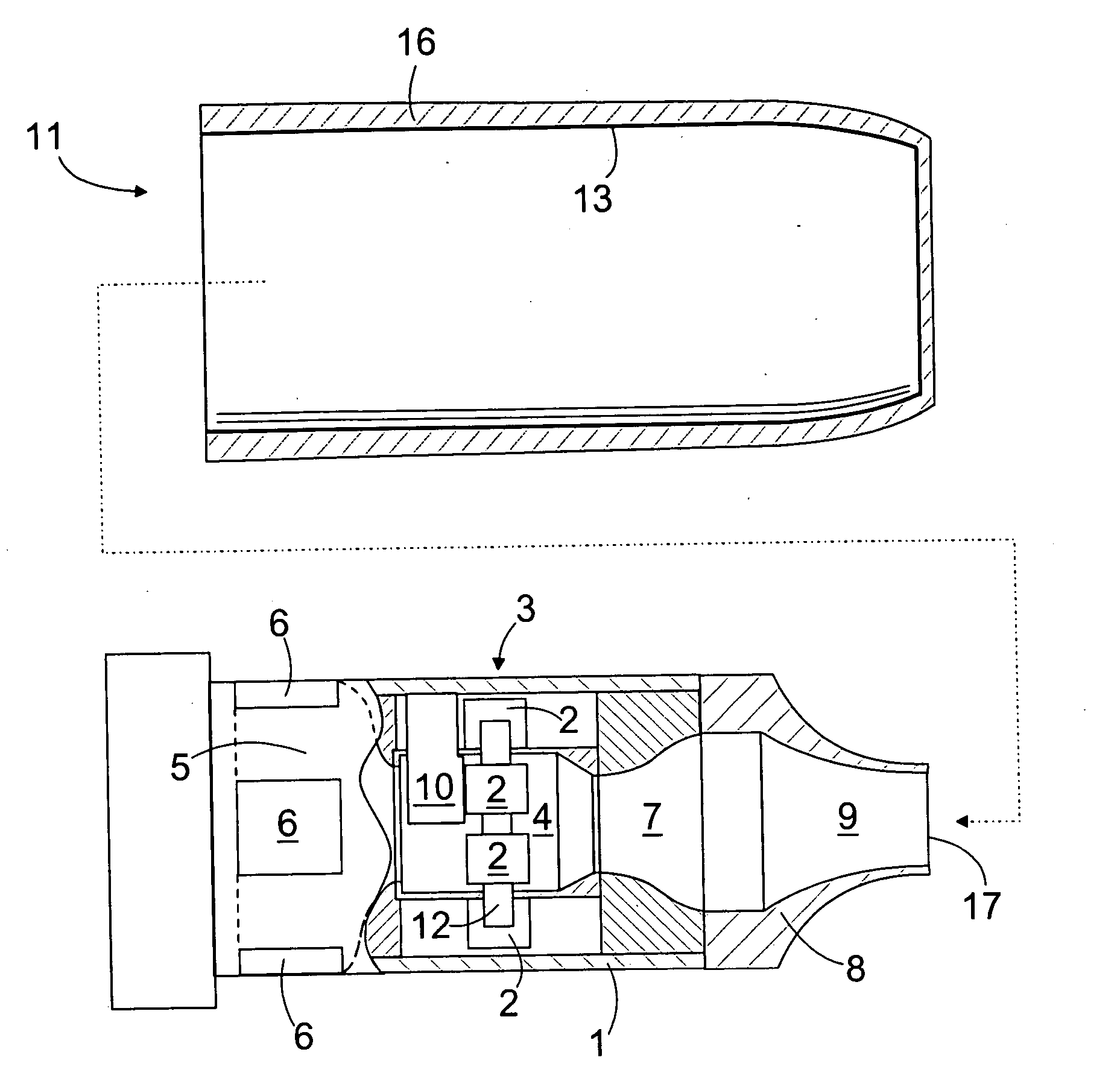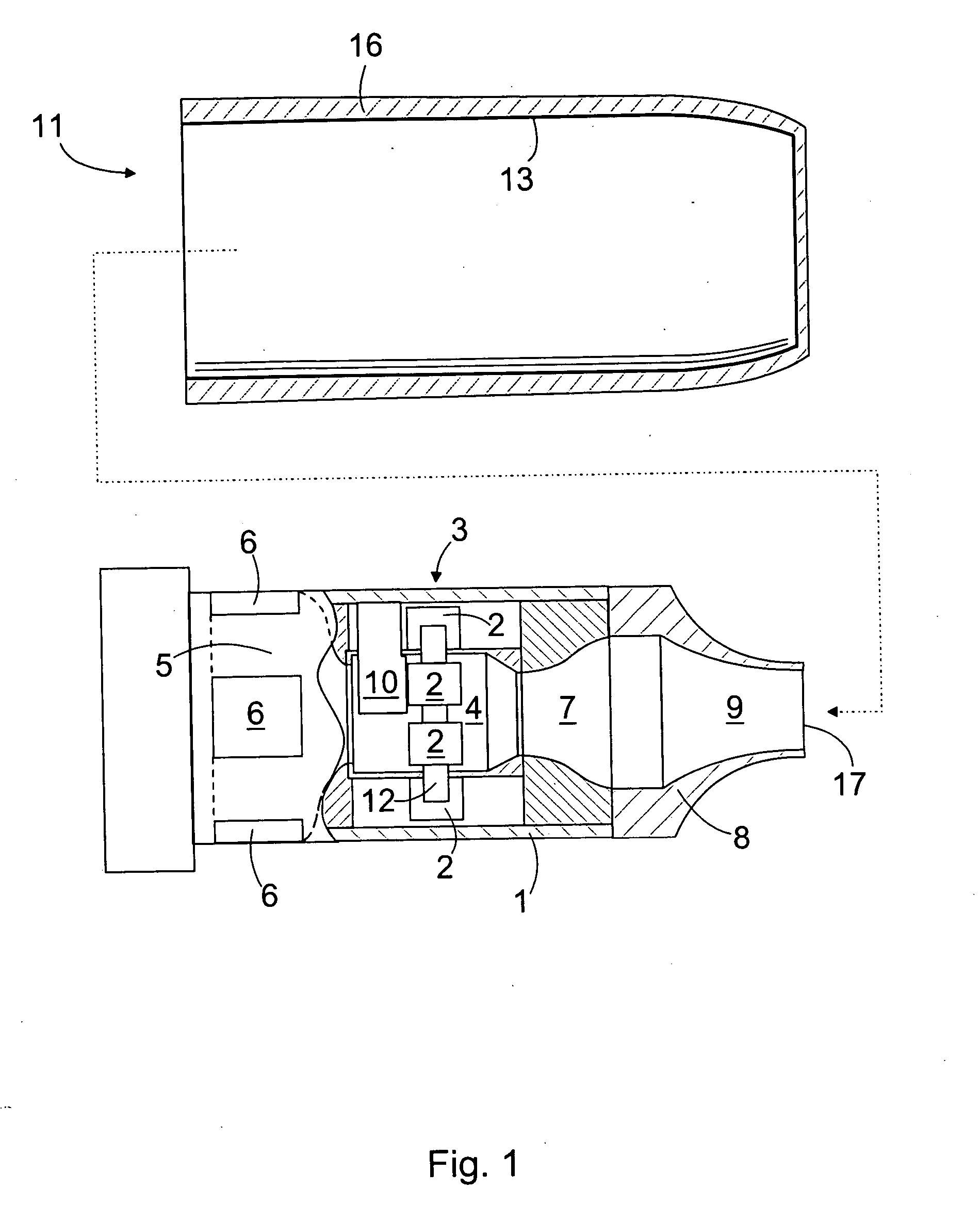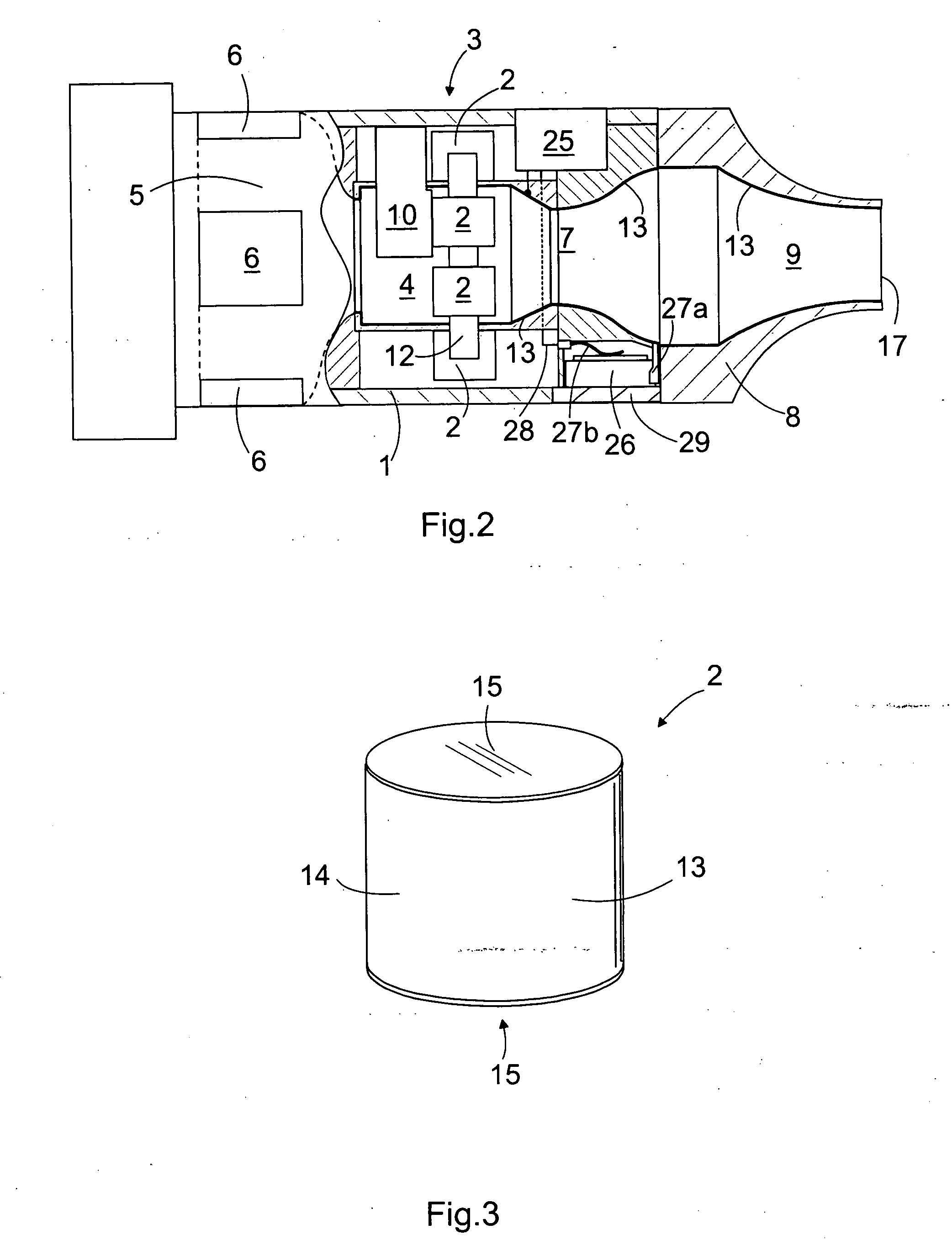Inhalator and method of manufacturing same
a technology of inhalator and manufacturing method, which is applied in the field of inhalator, can solve the problems of powdery agent agglomeration, high processing cost, and difficulty in reducing the specific electric resistance of the surface of the inhalator, so as to reduce the specific electric resistance of the surface, and reduce the moisture penetration through the surface
- Summary
- Abstract
- Description
- Claims
- Application Information
AI Technical Summary
Benefits of technology
Problems solved by technology
Method used
Image
Examples
Embodiment Construction
[0025]FIG. 1 is a partly cross-sectional schematic side view of an inhalator of the invention. The powder inhalator shown in FIG. 1 comprises a body 1 that is preferably made of polymer material by moulding or injection moulding or another corresponding method. The drug containers 2 of the inhalator are arranged inside the body 1. The shown inhalator comprises several drug containers arranged in a magazine 3. The magazine 3 also comprises a circular magazine body 12 that connects the drug containers 2 to each other. The body 12 is made of polymer material.
[0026] Each drug container 2 comprises a closed space, to which a pre-dosed amount of a pharmaceutical agent is arranged. The amount of the pharmaceutical agent is pre-dosed either in such a manner that the contents of one drug container produces the therapeutic effect in the user or in such a manner that the amount of the pharmaceutical agent administered by the inhalator in one inhalation can be adjusted. This way, small users, ...
PUM
| Property | Measurement | Unit |
|---|---|---|
| thickness | aaaaa | aaaaa |
| temperature | aaaaa | aaaaa |
| thickness | aaaaa | aaaaa |
Abstract
Description
Claims
Application Information
 Login to View More
Login to View More - R&D
- Intellectual Property
- Life Sciences
- Materials
- Tech Scout
- Unparalleled Data Quality
- Higher Quality Content
- 60% Fewer Hallucinations
Browse by: Latest US Patents, China's latest patents, Technical Efficacy Thesaurus, Application Domain, Technology Topic, Popular Technical Reports.
© 2025 PatSnap. All rights reserved.Legal|Privacy policy|Modern Slavery Act Transparency Statement|Sitemap|About US| Contact US: help@patsnap.com



